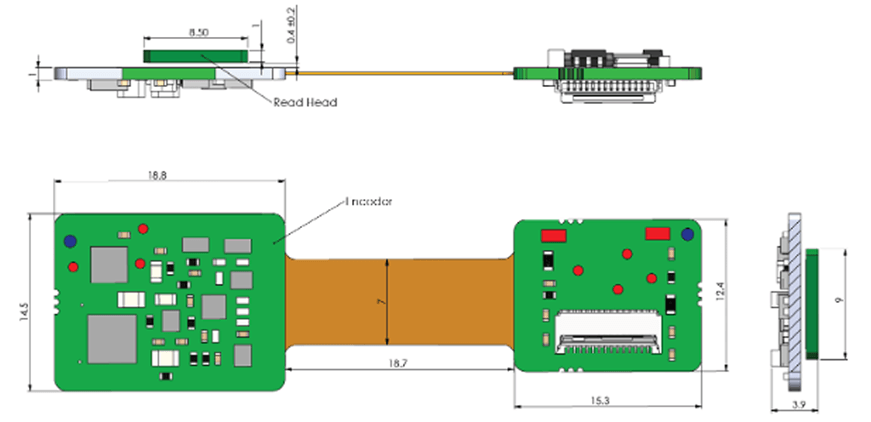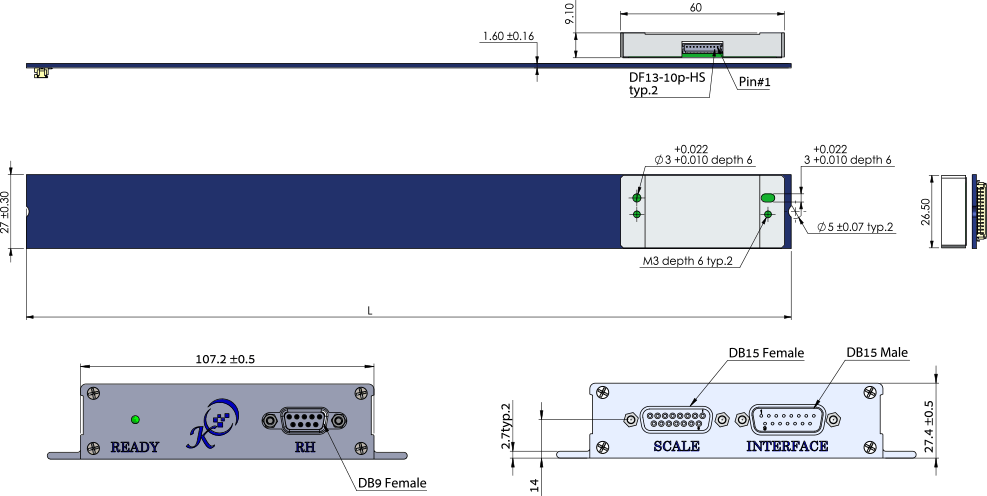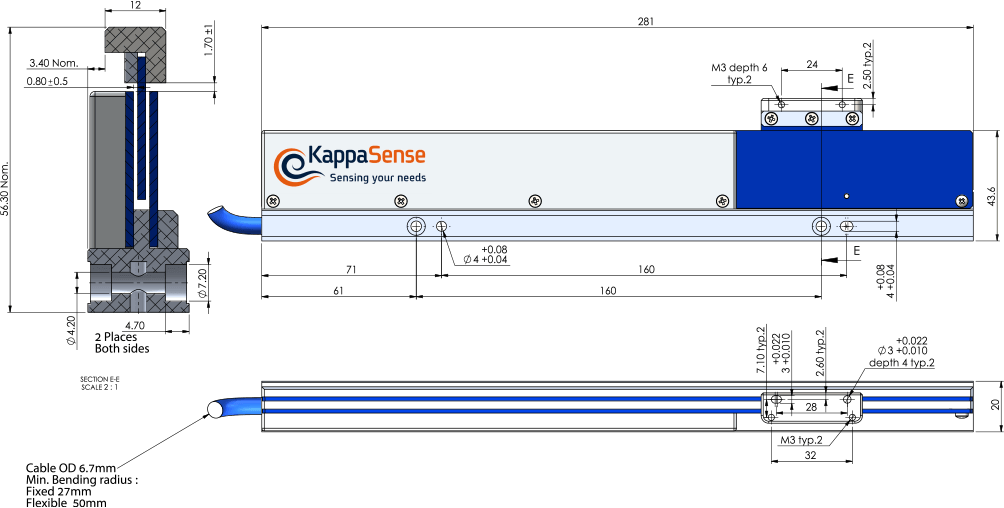Home > Applications > Capacitive Linear Encoders for Semiconductor Wafer Handling
Applications
A semiconductor wafer is a thin slice of semiconductor material, such as crystalline silicon. It is the substrate used for the fabrication of electronic integrated circuits, upon which microelectronic devices are built.
The process of creating electronic integrated circuits involves a number of chemical and physical processes that are performed on the semiconductor wafer. The wafer is moved between machines, each of which executes a specific process on the wafer until completion of all the processes required to create the microelectronic device.
Semiconductor wafer handling refers to the manipulation of the wafer as it is fed into or removed from a specific process, aligned before processing, and as it is transported and sorted in the factory.
Moving wafter into and out of processing machines is generally done using robotic arms that rely on rotary motion in their joints to achieve the flexibility needed for this task. Wafer sorters, on the other hand, often require linear motion to move a wafer handling robot between the wafer cartridges (called “front-opening unified pods”, or FOUPs, for 300mm wafers). A wafer sorter will typically have a number of cartridge bays, and the task of the sorter is to move wafer between cartridges. The wafer handling robot will move wafers in and out of the cartridges, but a central carriage is required to move the robot from cartridge to cartridge. It is here that linear motion comes into play.
In order to keep machine cost down, rotary-driven linear motion, using pulleys and belts, is often used to create this linear motion. The challenge is that there are inherent inaccuracies between the angular position of the shaft of the rotary motor and the linear position of the load that is being driven. Inaccuracies arise especially, but not only, from flexibility in belts and from the inevitable wear out of such belts. Stability of positioning is also a challenge given this flexibility, but it is also affected by factors such as gear backlash and the resolution of the encoder on the rotary motor. Inaccuracies are compounded as legitimate concerns for cost drive down the cost of the components of which the linear actuator is composed.
Capacitive linear high resolution encoders are suitable for semiconductor solutions such as the wafer sorter. The encoder can be used as the sensing element of the system load, in this case the wafer handling robot. By measuring the actual position of the robot, inaccuracies in the rotary-to-linear conversion can be compensated for, with the position control loop in the servo system being closed using the load position instead of the rotary motor position. This is a typical use of the KappaSense product as a semiconductor encoder.
The utilization of a wafer handling robot that feeds wafers into and out of processing can be increased if the robot were able to serve two or more processing machines. The robot can be mounted on a linear motion mechanism and moved from machine to machine. Here, too, KappaSense linear capacitive semiconductor encoders can be used to sense the robot position.
Benefits of capacitive linear industrial encoders from KappaSense in semiconductor wafer handling include:


